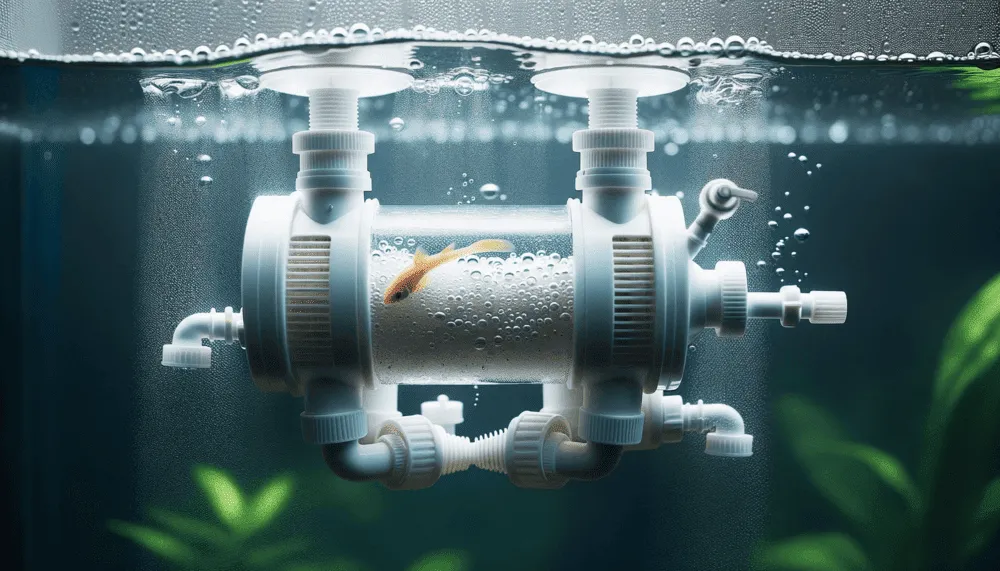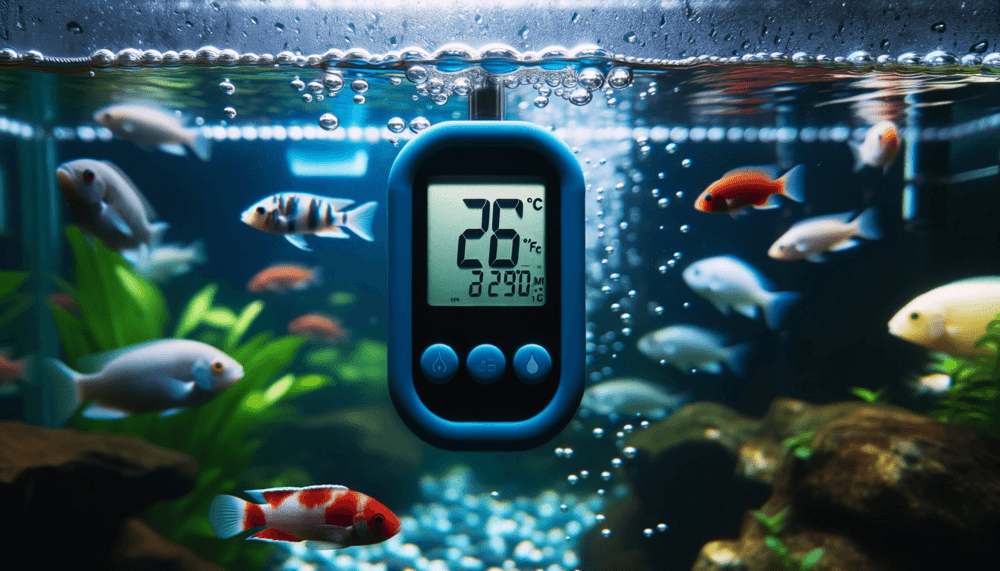If you’re an aquarium enthusiast and love adding natural elements to your underwater world, you may have wondered whether you can use outdoor rocks and wood in your aquarium. The answer is yes, but with a few considerations. Outdoor rocks and wood can add a touch of authenticity and aesthetic appeal to your aquarium, but it’s crucial to ensure they are safe for your aquatic life. In this article, we’ll explore the factors to consider before introducing outdoor rocks and wood into your aquarium, ensuring a healthy and beautiful environment for your aquatic friends.
Potential Risks of Using Outdoor Rocks and Wood
Introduction
When it comes to setting up your aquarium, the choice of decorative materials plays a crucial role in creating a natural and aesthetically pleasing habitat for your fish. While incorporating outdoor rocks and wood into your aquarium may seem like a cost-effective and visually appealing option, it is essential to be aware of the potential risks associated with these materials. In this article, we will discuss these risks and provide you with valuable insights on how to properly assess and prepare outdoor rocks and wood for use in your aquarium.
Contamination from Chemicals and Pesticides
One of the main concerns with using outdoor rocks and wood in your aquarium is the risk of contamination from chemicals and pesticides. Rocks and wood found in outdoor environments may have been exposed to various environmental pollutants, including pesticides, herbicides, and fertilizers. These substances can leach into the water, posing a significant threat to the health and well-being of your aquatic inhabitants.
To avoid this risk, it is crucial to thoroughly research the source of the rocks and wood you intend to use. Opt for materials that have not been treated with any chemicals or pesticides. Natural, untreated rocks and wood are the safest options for creating a healthy and thriving aquarium ecosystem.
Presence of Harmful Bacteria and Parasites
Another potential risk of using outdoor rocks and wood in your aquarium is the presence of harmful bacteria and parasites. Rocks and wood that have been exposed to outdoor elements can harbor a wide range of microorganisms that may prove detrimental to your fish and other tank inhabitants. These organisms can introduce diseases and infections, leading to a decline in the overall health of your aquarium.
To minimize the risk of introducing harmful bacteria and parasites, it is essential to perform a safety test before adding outdoor rocks and wood to your aquarium. This test involves soaking the materials in dechlorinated water for an extended period and monitoring for any signs of bacterial growth or parasite infestation. If the test reveals any issues, it is best to avoid using the rocks or wood altogether.
Leaching of Heavy Metals
Outdoor rocks and wood may also pose a risk of leaching heavy metals into your aquarium water. Heavy metals, such as lead, copper, and zinc, can have toxic effects on aquatic life, leading to various health issues and even mortality. These metals can originate from the natural composition of the rocks and wood or from environmental contaminants they have been exposed to.
To mitigate the risk of heavy metal leaching, it is crucial to inspect the rocks and wood for any signs of discoloration or metallic residues. Additionally, opting for naturally occurring rocks and non-toxic wood types can significantly reduce the likelihood of heavy metal contamination in your aquarium.
Introduction of Foreign Species
Using outdoor rocks and wood in your aquarium can inadvertently introduce foreign species, including plants, insects, and even small animals. These organisms may disrupt the delicate balance of your aquarium ecosystem and compete with your fish for resources. Furthermore, some foreign species can be invasive and rapidly reproduce, leading to overpopulation issues and potentially harming native species.
To minimize the risk of introducing foreign species, it is essential to select rocks and wood that have been thoroughly cleaned and sterilized. Additionally, practicing proper maintenance and observation of your aquarium can help detect and remove any unwanted organisms before they become problematic.
Factors to Consider Before Using Outdoor Rocks and Wood
Researching the Source
Before incorporating outdoor rocks and wood into your aquarium, it is crucial to research their source. Identify the specific location where they were obtained and ascertain whether any chemicals or pesticides have been used in the vicinity. Furthermore, consider the geological composition of the rocks and the type of wood to ensure they are suitable for your aquarium environment.
Performing a Safety Test
To ensure the safety of your aquarium inhabitants, perform a safety test on the rocks and wood you plan to use. Soak them in dechlorinated water for a period of at least two weeks and closely monitor for any signs of bacterial growth, parasite infestation, or water discoloration. If any issues arise during the test, it is recommended to avoid using the materials in your aquarium.
Checking for Structural Integrity
Before adding outdoor rocks and wood to your aquarium, carefully examine them for structural integrity. Avoid rocks that show signs of cracks, sharp edges, or loose particles. Similarly, inspect wood for signs of decay or rot, as these can compromise its durability and stability within the aquarium environment.
Inspecting for Signs of Decay or Rot
To ensure the long-term viability of outdoor wood in your aquarium, inspect it for signs of decay or rot. Look for discolored or soft areas, as these indicate deterioration. If any compromise is observed, it is advisable to choose alternative materials or properly treat and cure the wood before introducing it into your aquarium.
Preparing Outdoor Rocks and Wood for Aquarium Use
Cleaning and Sterilizing the Rocks
Properly cleaning and sterilizing outdoor rocks is a critical step in preparing them for aquarium use. Start by scrubbing off any visible debris, dirt, or algae using a soft brush. Subsequently, place the rocks in a solution of water and aquarium-safe bleach, following the manufacturer’s instructions for dilution ratios. Allow the rocks to soak for at least 24 hours, ensuring that all surfaces are thoroughly immersed. Finally, rinse the rocks with clean, dechlorinated water before placing them in your aquarium.
Boiling the Wood to Remove Unwanted Organisms
To eliminate potential bacteria, parasites, and other unwanted organisms, it is recommended to boil outdoor wood before adding it to your aquarium. Fill a large pot with enough water to submerge the wood completely and bring it to a boil. Once boiling, carefully place the wood into the pot and maintain a rolling boil for at least 30 minutes. The boiling process will sanitize the wood, making it safe for aquarium use.
Soaking the Wood to Prevent Floating
To prevent wood from floating in your aquarium, it is necessary to soak it before adding it to the tank. Fill a container with dechlorinated water and place the wood inside. Use a weight or heavy object to keep the wood submerged, and allow it to soak for several weeks or until it becomes waterlogged. Soaking the wood will help it sink and avoid displacing the aquarium environment once it is introduced.
Curing the Wood to Enhance Durability
Curing outdoor wood is an important step to enhance its durability and prevent it from deteriorating within your aquarium. Prior to adding the wood to your tank, allow it to dry and cure in a well-ventilated area for a few weeks. This process aids in stabilizing the wood’s structure, reducing the risk of decay or rot over time. Once cured, the wood can be safely added to your aquarium, providing a natural and aesthetically pleasing habitat for your fish.
Selecting Suitable Types of Outdoor Rocks and Wood
Choosing Naturally pH Neutral or Alkaline Rocks
When selecting outdoor rocks for your aquarium, opt for ones that possess a naturally pH neutral or alkaline composition. Rocks with acidic properties can alter the water chemistry of your aquarium, potentially harming your fish and plant life. By choosing pH neutral or alkaline rocks, you can maintain a stable and healthy pH level in your tank.
Avoiding Porous and Soft Rocks
It is important to avoid using porous and soft rocks in your aquarium, as they can deteriorate over time, releasing particles and substances that may harm your aquatic inhabitants. Instead, choose rocks with dense and solid structures that are less likely to crumble or deteriorate in the aquarium environment.
Opting for Dense and Non-Toxic Wood
When it comes to outdoor wood, select types that are dense and non-toxic. Dense wood is less likely to break down quickly and release tannins or other harmful substances into the water. Additionally, non-toxic wood types ensure the safety of your fish and other tank inhabitants, as they won’t introduce any toxic compounds into the aquarium environment.
Alternatives to Outdoor Rocks and Wood
Using Aquascaping Rocks and Driftwood
If you are concerned about the risks associated with using outdoor rocks and wood, consider utilizing aquascaping rocks and driftwood specifically designed for aquarium use. These materials are carefully sourced, cleaned, and prepared to ensure they are safe and suitable for aquatic environments. Aquascaping rocks come in a variety of sizes, shapes, and colors, allowing you to create stunning landscapes within your aquarium. Similarly, driftwood provides a natural and captivating aesthetic while offering hiding places and perch areas for your fish.
Considering Synthetic Materials
For those who prefer to avoid the potential risks associated with natural materials, synthetic decorative elements are a viable alternative. Various synthetic rocks and wood replicas are available in the market, mimicking the appearance of natural materials while eliminating the risks of contamination, decay, and instability. Consider exploring these synthetic options to create a visually appealing aquarium without compromising the safety and well-being of your aquatic inhabitants.
Aquarium Safety and Maintenance
Monitoring Water Parameters Regularly
To ensure the health and vitality of your aquarium, it is crucial to regularly monitor water parameters such as temperature, pH level, ammonia, nitrite, and nitrate levels. Keeping these parameters within optimal ranges is essential for the well-being of your fish and other tank inhabitants. Regular testing and adjustments will help you maintain a stable and thriving aquatic ecosystem.
Performing Routine Aquarium Maintenance
Proper aquarium maintenance is essential to preserve the health and longevity of your aquarium. Regular cleaning of filters, gravel, and aquarium surfaces helps remove debris and waste that can contribute to poor water quality. Additionally, performing water changes, removing algae growth, and trimming aquatic plants are necessary steps to promote a clean and balanced aquarium environment.
Removing and Replacing Rocks and Wood if Necessary
If at any point you notice signs of decay, deterioration, or contamination in your outdoor rocks and wood, it is important to promptly remove and replace them. By monitoring your aquarium regularly, you can identify any potential issues and take corrective action before they negatively impact the health of your fish and other aquatic life. Regularly inspect the condition of rocks and wood, ensuring they remain structurally sound and free from any potential risks or hazards.
Conclusion
While the urge to incorporate outdoor rocks and wood into your aquarium may be tempting, it is important to understand and mitigate the potential risks associated with these materials. Contamination from chemicals and pesticides, harmful bacteria and parasites, leaching of heavy metals, and the introduction of foreign species are all risks that need to be carefully considered. By researching the source, performing safety tests, checking for structural integrity, and inspecting for signs of decay or rot, you can minimize these risks and ensure the safety and well-being of your aquarium inhabitants. Additionally, properly preparing outdoor rocks and wood through cleaning, sterilizing, boiling, soaking, and curing processes, as well as choosing suitable types of materials, can further enhance their compatibility with your aquarium ecosystem. Finally, considering alternatives such as aquascaping rocks, driftwood, or synthetic materials can provide safe and visually appealing options for creating an enchanting underwater world. By prioritizing aquarium safety and maintenance, while remaining vigilant and proactive, you can create a thriving and harmonious environment for your aquatic companions to enjoy.





